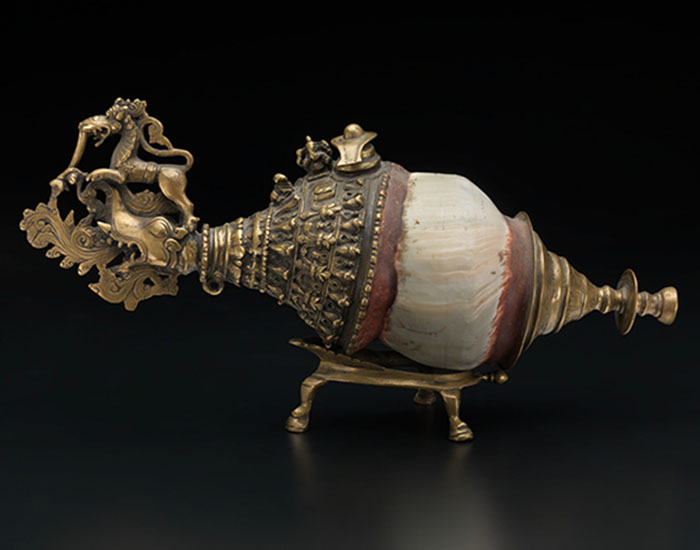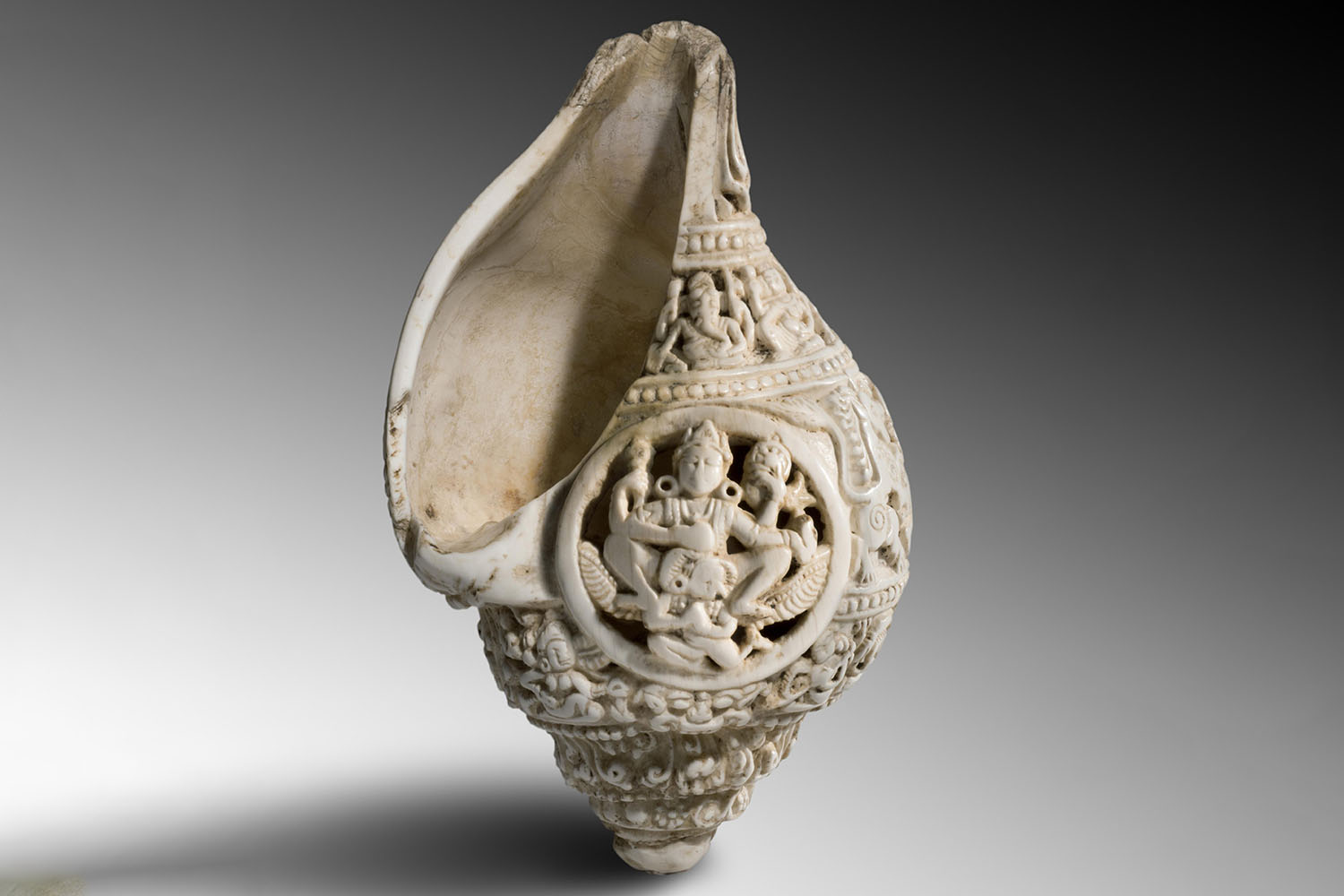
Obtained from the Turbinella Pyrum sea-snail found in the Indian Ocean, the shankh (Sanskrit for “conch”) is a smooth, white bulbous shell which, when blown into, produces a sound similar to a trumpet. In Hinduism, its sound is believed to be auspicious and certain ceremonial rituals are begun with the blowing of the shankh to ward off evil forces. In Tibet, the shankh is known as dung dkar and takes the form of a musical instrument with a small metallic cap fitted at the apex as a mouthpiece. The dung dkar is often embellished with ornate metallic work.
A culturally significant object, the shankh is seen widely throughout Odisha, West Bengal and other parts of eastern India. It is a recurring motif in textiles such as bichitrapuri sarees, the pattachitra and ikat prints of Odisha, and the kantha embroidery of West Bengal. Carved conch shells are also used in a number of Bengali crafts, including the shakha pola bangles that are traditionally worn by newly-married Bengali women.
Within Hindu iconography, the shankh is attributed to the god Vishnu who holds it along with a chakra (wheel), gada (mace) and padma (lotus). It is also believed to be the abode of his consort, the goddess Lakshmi. As a symbol of prosperity in both Hindu and Buddhist mythology, the shankh appears next to the god of wealth, Kubera, in the form of the Shankanidhi. The Shankanidhi, accompanied by the Padmanidhi, also appears in the rock-cut sculptures and wall paintings of the Ajanta and Ellora caves in Maharashtra.
In Buddhism, the right-spiralling shankh is one of the eight auspicious symbols, or ashtamangala, which represent dharma. In Chinese and Tibetan Buddhism, these eight symbols are believed to make up the body of the Buddha, with the conch symbolising his throat through which his teachings could spread in all directions. The right-spiralling shankh is also believed to mimic the motion of the cosmos, including the movements of the sun, moon and the stars.
Several varieties of the shankh (carved, metallic, decorated and plain) – from different time periods in India, Tibet, Madagascar and other regions – are on display at the Metropolitan Museum of Art, New York, USA. The shankh continues to feature in sculptures alongside deities in Hindu and Buddhist temples across the world.
First Published: April 21, 2022
Last Updated: July 26, 2023



